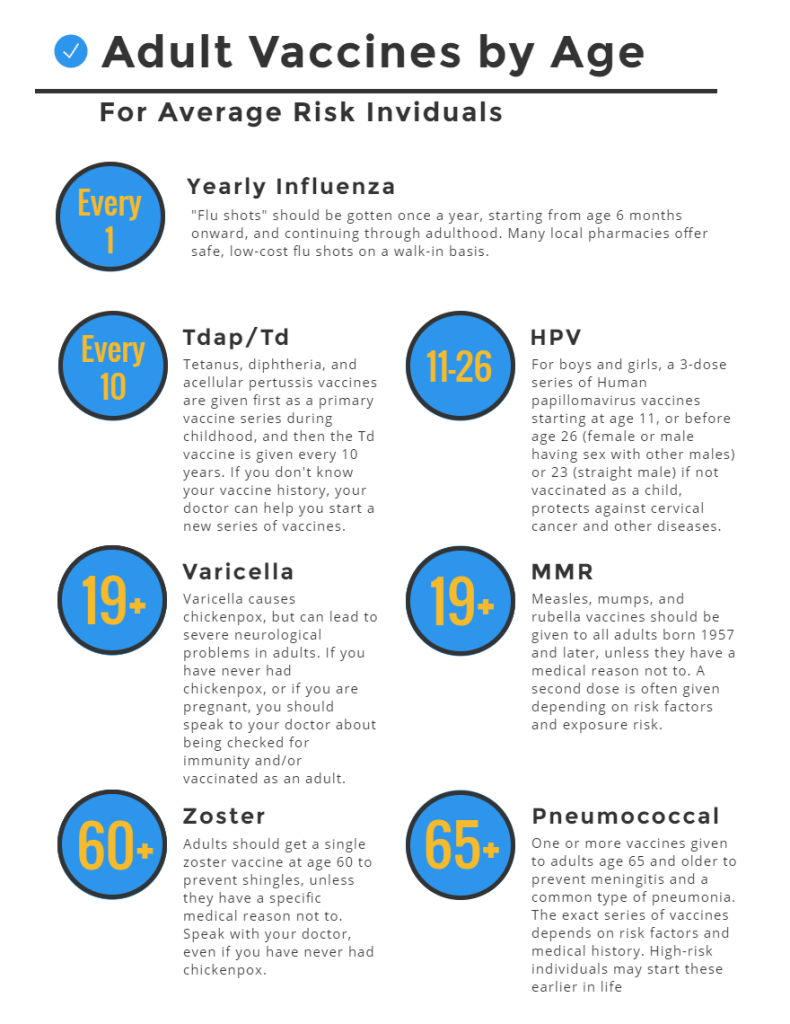Did you know that the Affordable Care Act, better known as Obamacare, has required insurers and healthcare plans to cover a wide variety of preventive health screening tests? And most of the time, these procedures are now free for you!
Catching diseases early, before they become deadly (or better yet, preventing them entirely) is often the safest and most cost-effective way to fight sickness and stay healthy in life. That’s why all plans that are compliant with the Affordable Care Act (so basically any plans that started after 2010 in addition to Medicaid and Medicare) are required to include free screening options for their customers.
So what does that mean for you?
The short answer is: most commonly prescribed screening tests are available for free to you, with anything else likely subject to the cost-sharing part of your insurance policy. For a longer answer, you’ll want to browse through the list below of specific tests that are covered for all ACA-compliant plans, taken directly from the healthcare.gov website:
For All Adults:
- Alcohol misuse screening and counseling
- Aspirin use to prevent cardiovascular disease for men and women of certain ages
- Blood pressure screening
- Cholesterol screening
- Colorectal cancer screening for adults over 50
- Depression screening
- Diabetes (Type 2) screening for adults with high blood pressure
- Diet counseling for adults at higher risk for chronic disease
- Hepatitis B screening for people at high risk, including people from countries with 2% or more Hepatitis B prevalence, and U.S.-born people not vaccinated as infants and with at least one parent born in a region with 8% or more Hepatitis B prevalence.
- Hepatitis C screening for adults at increased risk, and one time for everyone born 1945 – 1965
- HIV screening for everyone ages 15 to 65, and other ages at increased risk
- Immunization vaccines for adults — doses, recommended ages, and recommended populations vary:
- Diphtheria
- Hepatitis A
- Hepatitis B
- Herpes Zoster
- Human Papillomavirus (HPV)
- Influenza (flu shot)
- Measles
- Meningococcal
- Mumps
- Pertussis
- Pneumococcal
- Rubella
- Tetanus
- Varicella (Chickenpox)
- Lung cancer screening for adults 55 – 80 at high risk for lung cancer
- Obesity screening and counseling
- Sexually transmitted infection (STI) prevention counseling for adults at higher risk
- Syphilis screening for adults at higher risk
- Tobacco Use screening for all adults and cessation interventions for tobacco users
For pregnant women or women who may become pregnant:
- Routine Anemia Screening
- Breastfeeding support and counseling and access to breastfeeding supplies
- Food and Drug Administration-approved contraceptive methods, sterilization procedures, and patient education and counseling (not including abortifacient drugs). This does not apply to health plans sponsored by certain exempt “religious employers.”
- Folic acid supplements for women who may become pregnant
- Gestational diabetes screening for women 24 to 28 weeks pregnant and those at high risk of developing gestational diabetes
- Gonorrhea screening for women at higher risk
- Hepatitis B screening for pregnant women at their first prenatal visit
- Rh Incompatibility screening for all pregnant women and follow-up testing for women at higher risk
- Syphilis screening
- Expanded tobacco intervention and counseling for pregnant tobacco users
- Urinary tract or other infection screening
For All Women:
- Breast cancer genetic test counseling (BRCA) for women at higher risk
- Breast cancer mammography screenings every 1 to 2 years for women over 40
- Breast cancer chemoprevention counseling for women at higher risk
- Cervical cancer screening for sexually active women
- Chlamydia infection screening for younger women and women at higher risk
- Domestic and interpersonal violence screening and counseling
- Gonorrhea screening for all women at higher risk
- HIV screening and counseling for sexually active women
- Human Papillomavirus (HPV) DNA test every 3 years for women with normal cytology results who are 30 or older
- Osteoporosis screening for women over age 60 depending on risk factors
- Rh incompatibility screening follow-up testing for women at higher risk
- Sexually transmitted infections counseling for sexually active women
- Syphilis screening for women at increased risk
- Tobacco use screening and interventions
- Well-woman visits to get recommended services for women under 65
For Children:
- Alcohol and drug use assessments for adolescents
- Autism screening for children at 18 and 24 months
- Behavioral assessments for children ages: 0 to 11 months, 1 to 4 years, 5 to 10 years, 11 to 14 years, 15 to 17 years
- Blood pressure screening for children ages: 0 to 11 months, 1 to 4 years , 5 to 10 years, 11 to 14 years, 15 to 17 years
- Cervical dysplasia screening for sexually active females
- Depression screening for adolescents
- Developmental screening for children under age 3
- Dyslipidemia screening for children at higher risk of lipid disorders ages: 1 to 4 years, 5 to 10 years,11 to 14 years, 15 to 17 years
- Fluoride chemoprevention supplements for children without fluoride in their water source
- Gonorrhea preventive medication for the eyes of all newborns
- Hearing screening for all newborns
- Height, weight and body mass index (BMI) measurements for children ages: 0 to 11 months, 1 to 4 years, 5 to 10 years, 11 to 14 years, 15 to 17 years
- Hematocrit or hemoglobin screening for all children
- Hemoglobinopathies or sickle cell screening for newborns
- Hepatitis B screening for adolescents at high risk, including adolescents from countries with 2% or more Hepatitis B prevalence, and U.S.-born adolescents not vaccinated as infants and with at least one parent born in a region with 8% or more Hepatitis B prevalence: 11 – 17 years.
- HIV screening for adolescents at higher risk
- Hypothyroidism screening for newborns
- Immunization vaccines for children from birth to age 18 — doses, recommended ages, and recommended populations vary:
- Diphtheria, Tetanus, Pertussis (Whooping Cough)
- Haemophilus influenzae type b
- Hepatitis A
- Hepatitis B
- Human Papillomavirus (PVU)
- Inactivated Poliovirus
- Influenza (flu shot)
- Measles
- Meningococcal
- Pneumococcal
- Rotavirus
- Varicella (Chickenpox)
- Iron supplements for children ages 6 to 12 months at risk for anemia
- Lead screening for children at risk of exposure
- Medical history for all children throughout development ages: 0 to 11 months, 1 to 4 years , 5 to 10 years , 11 to 14 years , 15 to 17 years
- Obesity screening and counseling
- Oral health risk assessment for young children ages: 0 to 11 months, 1 to 4 years, 5 to 10 years
- Phenylketonuria (PKU) screening for newborns
- Sexually transmitted infection (STI) prevention counseling and screening for adolescents at higher risk
- Tuberculin testing for children at higher risk of tuberculosis ages: 0 to 11 months, 1 to 4 years, 5 to 10 years, 11 to 14 years, 15 to 17 years
- Vision screening for all children
For more detailed information on these covered tests, check out the Healthcare.gov website!



